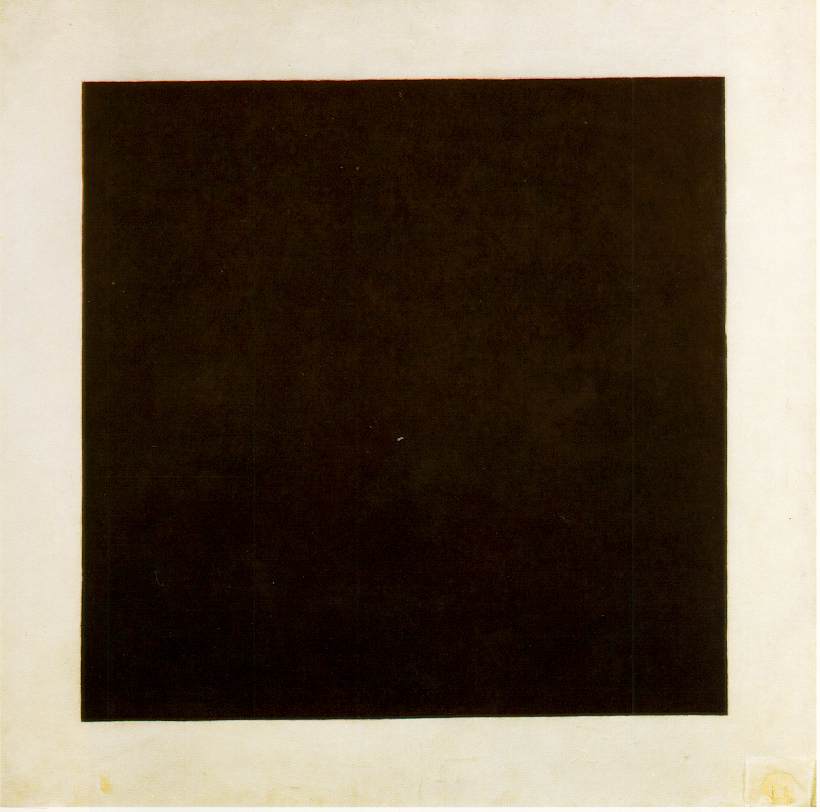 Over the years, many an artistic masterpiece has been discovered hiding beneath layers of paint on reused canvases. There was a portrait of a woman behind van Gogh’s “Patch of Grass” (1887); a portrait of a bearded man beneath Picasso’s “The Blue Room” (1901); and a painting of a woman with a child, bull, and sheep under Picasso’s “The Old Guitarist” (1904). But unlike the painting that art historians recently discovered under Kazimir Malevich’s “Black Square” (1915), none of these hidden compositions contained racist jokes.
Over the years, many an artistic masterpiece has been discovered hiding beneath layers of paint on reused canvases. There was a portrait of a woman behind van Gogh’s “Patch of Grass” (1887); a portrait of a bearded man beneath Picasso’s “The Blue Room” (1901); and a painting of a woman with a child, bull, and sheep under Picasso’s “The Old Guitarist” (1904). But unlike the painting that art historians recently discovered under Kazimir Malevich’s “Black Square” (1915), none of these hidden compositions contained racist jokes.
After examining “Black Square” under a microscope, researchers from Russia’s State Tretyakov Gallery, which houses one of three versions of the Suprematistcomposition, found a handwritten inscription under a topcoat of black paint. They believe it reads “Battle of negroes in a dark cave.”
Though they’re still deciphering the handwriting, the researchers assume this phrase is a reference to what is widely believed to be the first modern monochromatic artwork, a 1897 work by French writer and humorist Alphonse Allais, called “Combat de Nègres dans une cave pendant la nuit” (“Negroes Fighting in a Cellar at Night”). If their speculations are correct, then “Black Square” is in some kind of dialogue with Allais, who was well-known in Russia at the time Malevich worked, and whose “Combat” piece was considered a joke by contemporary European audiences, even if it is clearly a racist one.

Alphonse Allais, “Combat des Negres dans une cave, pendant la nuit” (“Negroes Fighting in a Cellar at Night”) (1897) (via
Now often referred to as the “zero point of painting,” “Black Square” is widely considered an avant-garde masterpiece. It has considerably degraded over the years due to poor conservation, having spent years unattended in Soviet archives. As art critic Peter Schjeldahl put it in the New Yorker, “The painting looks terrible: crackled, scuffed, and discolored, as if it had spent the past 88 years patching a broken window.”
In addition to the inscription, two other images were found under the black topcoat. “It has been known that under the image of the Black Square some other, underlying picture exists. We’ve found out that not just one, but two images are [underneath it],” Ekaterina Voronina, a researcher from Russia’s State Tretyakov Gallery, told Russia’s Kultura (Culture) TV channel. “We proved that the initial image is a Cubo-Futurist composition, while the painting lying directly under the Black Square — the colors of which you can see in the cracks — is a proto-Suprematist composition,” she said.

No hay comentarios:
Publicar un comentario